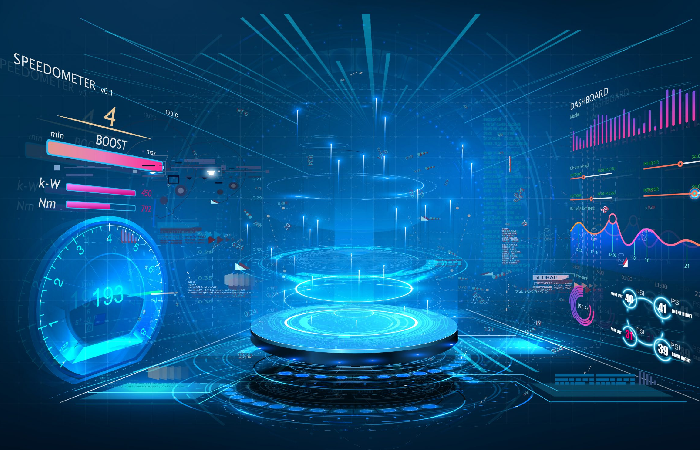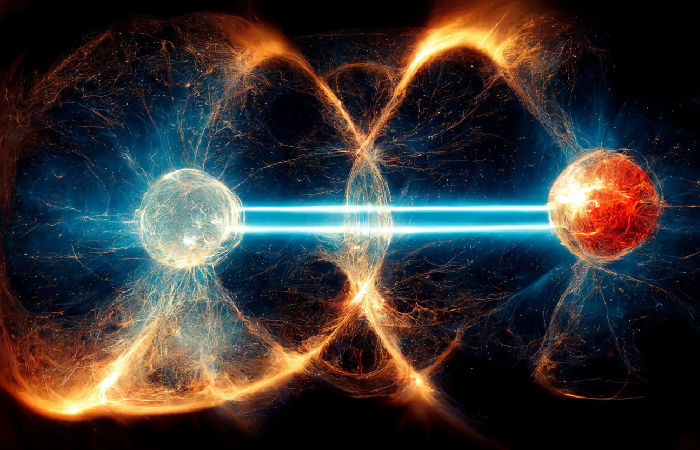Artificial Intelligence: The Technology That's Changing Everything

Artificial Intelligence (AI) is one of the most popular topics discussed in today’s fast-advancing world. People all over the world are fascinated by all the features and abilities provided by AI to bring their imaginations to work. AI is rapidly transforming and improving our day-to-day life.
What is Artificial Intelligence (AI)?
Artificial Intelligence (AI) is human intelligence that is programmed in computers and machines to act and think like humans. AI involves computer programs and algorithms so that they can complete tasks that require human intelligence like decision making, identifying patterns, self-driving, problem-solving, translating languages, speech recognition, and visual perception. AI has the potential to complete tasks and transform our lives.
Examples of AI
- Tesla: Uses computer and camera vision to power self-driving or automatic driving features on cars.
- Copilot: Microsoft Bing has now added a new “Copilot Your everyday AI companion”.
- Google Lens: Google Lens is a vision-based AI. In this, you just point the camera to any object, animal, or text, and it will detect it and provide information about it in a few seconds.
- ChatGPT: Users can ask anything to ChatGPT and AI Chatbot generates text responses to questions asked or commands given. It is created by OpenAI.
History of AI
- 1950: This is where AI’s origins begin. At this time, computers mostly functioned as large-scale calculators. Computing powers were still largely dependent on human thinking. Alan Turing, the British Mathematician imagined a computer capable of doing all the tasks without any human involvement but lacked the theory to prove it possible.
- 1956: research on AI starts as Dartmouth mathematician professor John McCarthy invited a small group of researchers to investigate and research on topic “Thinking Machines”.
- 1960: The first goal of early artificial intelligence (AI) research was to human knowledge into machines by computer programs.
- 1970: a period of inactivity and research brought unmet expectations and pending investigation in capturing the knowledge of experts.
- 1990: A worldwide move towards machine learning begins. AI expands information accessibility fuels the development of AI and brings Normal dialect handling or NLP, motion picture acknowledgement, stock determining, etc.
- 2000: with more interest in improving AI, the field experienced huge growth in development. Tech Giants like Google, Facebook, and Apple made big contributions to the development of AI.
- 2020: The AI research company OpenAI founded AI models GPT-1 and GPT-2 with billions of inputs and the ability to generate distinctive text responses. It still lacked information, which brought major development in AI and introduced the GPT-3 model with 175 Billion parameters.
How does AI work?
Artificial Intelligence works in the following steps:
- Input: AI collects Data from different sources and is then sorted into categories.
- Processing: AI then sorts the data using the patterns that are programmed to learn until similar data is recognized and found.
- Outcomes: AI can use those patterns to predict outcomes.
- Adjustments: AI learns from mistakes if the data set is considered a failure, and sends the corrected data set.
Technologies based on Artificial Intelligence (AI)
AI uses several methods to achieve its goals machine learning, natural language processing (NLP), Robotics, and neural networks.
Machine learning
The first approach to creating AI technology is through machine learning Algorithm (ML). Machine Learning enables computers to gather and learn information independently by analyzing data. It's divided into two types of learning:
- Supervised learning: Expected output for the input is from known labeled data sets. Example speech recognition.
- Unsupervised Learning: Expected outputs are because of unknown labeled data sets. Example clustering.
Neural Networks
Machine learning is done by using Neural Networks that uses network of Artificial neurons to process and analyze data. It is a powerful tool in machine learning. This makes it very useful in many ways like image and speech recognition, and game playing.
Natural Language Processing (NPL)
Natural Language Processing (NPL) is an important part of AI that enables computers to process, analyze, and understand human language. NPL involves developing models and algorithms that allow computers to perform various tasks such as chatbot interactions and human language translation.
Robotics
Robotics is an important part of AI and Involves creating smart and intelligent computers and machines capable of performing tasks automatically. It involves building and programming robots to perform complex tasks that are dangerous or impossible for humans like space exploration.
Types of Artificial Intelligence
There are many types of AI, each with its strengths and weaknesses, divided based on capabilities and functions:
- Narrow AI: Narrow AI or Weak AI is programmed and trained to perform their tasks but cannot generalize tasks.
- General AI: General AI or Strong AI has human intelligence and the ability to perform multiple tasks. Systems are programmed to learn, understand, and perform multiple tasks effectively that is how humans would want.
- Super AI: Super AI or Superintelligent AI that surpasses human intelligence in creativity, solving complex problems, and performing tasks without any human involvement.
What is Artificial General Intelligence?
Artificial general intelligence (AGI) refers to a state in which computer systems are able to perform any task and able to achieve and exceed human intelligence. Artificial general intelligence (AGI) is the pinnacle and self-awareness of computers as stated in fiction novels, comics, television shows, and movies. It is still not clear if it is possible and achievable, or if it’s still far or impossible.
Regardless of how far we are from achieving AGI, Artificial general intelligence is not yet real in that a machine can think like a human does. Programming AGI requires a machine to be self-aware it has started to appear in smartphones in the form of Siri, a self-driving feature in Tesla cars.
Advantages and Disadvantages of Artificial Intelligence (AI)
Advantages
- Efficiency and productivity: Artificial Intelligence programs can handle many speedy tasks and operate at any time without any rest, while studies show humans are productive for 3 to 4 hours per day.
- Better Decision Making: AI can analyze large datasets to identify trends that are often invisible to humans, which enhances the decision-making process in various fields like Business, Healthcare, etc.
- Reducing Human Error: The decisions taken by AI are mostly based on information gathered and a certain set of algorithms.
- 24/7 availability: AI is capable of working 24 hours/7 days a week, working endlessly without any breaks.
- Risky Tasks: One of the main advantages of Artificial Intelligence is that AI robots can perform complex, and dangerous tasks which could be risky for humans. It could be a task at a construction site, mining coal and oil, or exploring space.
Disadvantages
- Creativity: Artificial Intelligence (AI) lacks the creativity of humans which makes them unable to do tasks that need imaginative processes and thinking. While AI can copy creativity while generating art videos or text, it still doesn’t have the originality or ability to think out of the box.
- Emotional Intelligence: While AI can be programmed to recognize emotions, it cannot still understand human emotions nor know how to respond effectively.
- Dependence and reliability: it is risky to over-rely on AI to complete tasks as there is always a possibility that AI to produce incorrect results.
- Job Displacement: The rise of AI has led to replacing jobs in manufacturing, retail, customer service, and many more. AI led to many employees retiring and requiring them to upskill.
How is AI changing NYC?
Artificial intelligence is changing New York City in a million ways, from industry to everyday life.
The AI-driven diagnostics developed at Mount Sinai Health System enables doctors to provide better care while being empowered with predicting diseases and personalizing treatments.
On Wall Street, which epitomizes the financial sector, AI is used for high-frequency trading, fraud detection, and risk management—activities that make financial operations more efficient and secure.
The NYPD uses AI in public safety to better analyze crime trends and distribute resources more efficiently.
Besides, AI-powered apps, such as Clara and Recycle Track Systems, back up city services from scheduling appointments with officials to waste management optimization. AI is everywhere and leads NYC into an innovative and efficient future.




